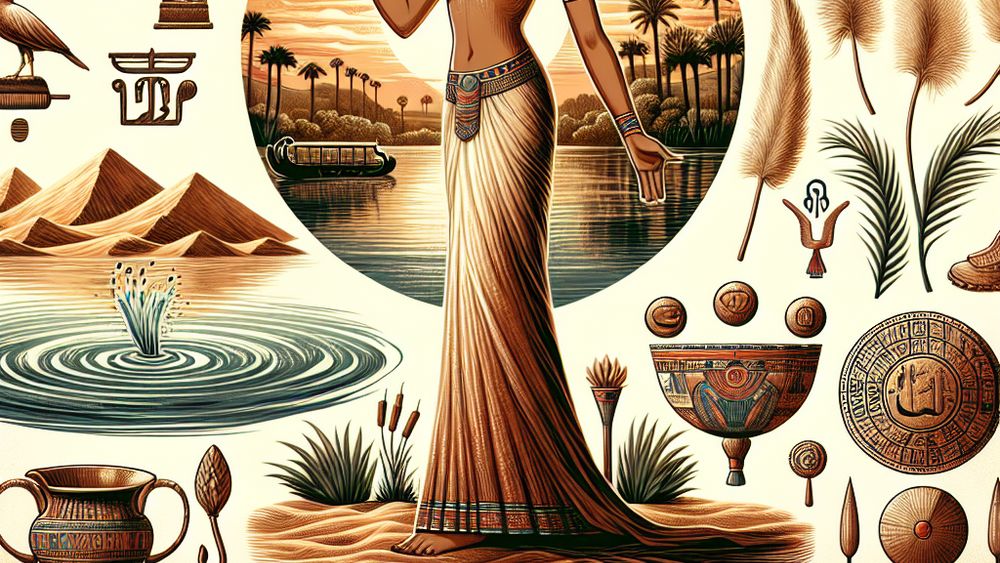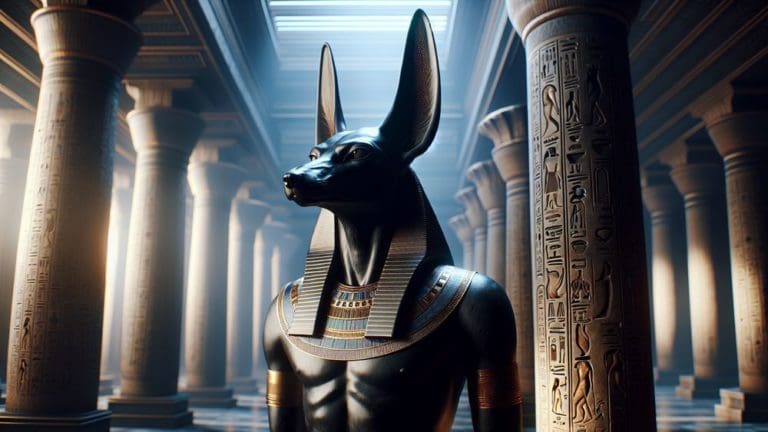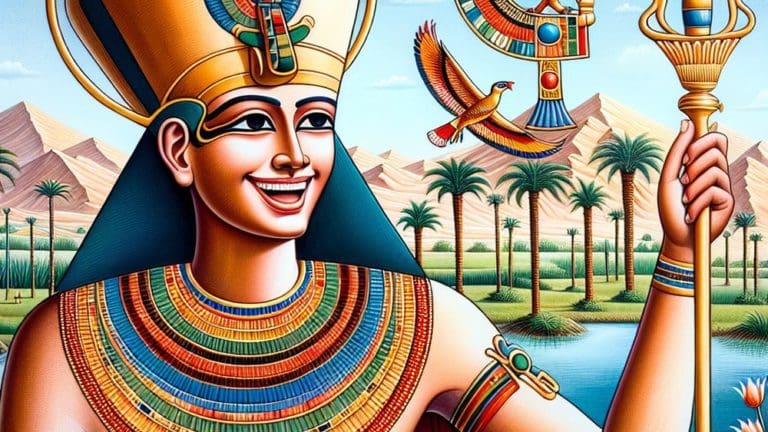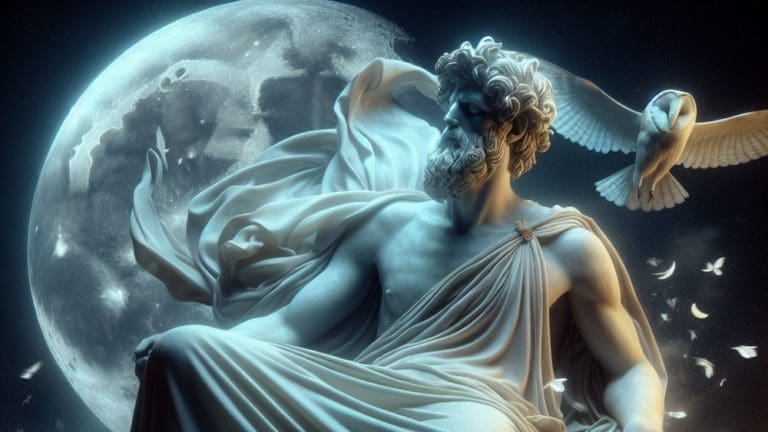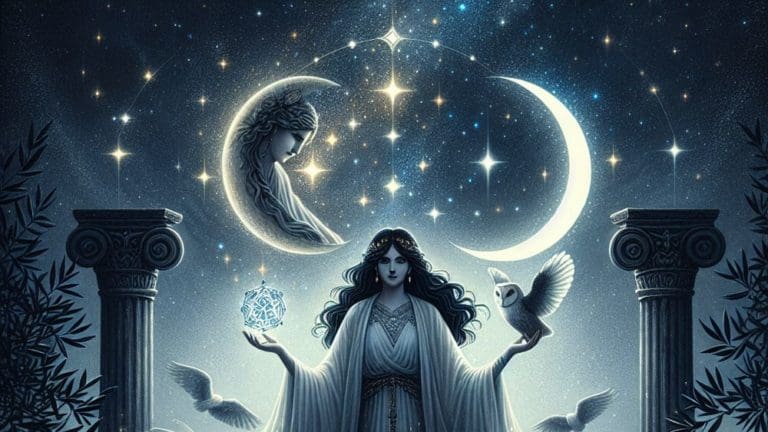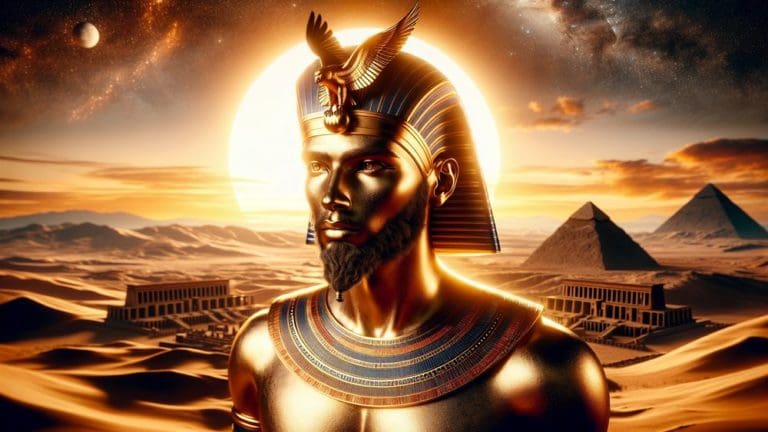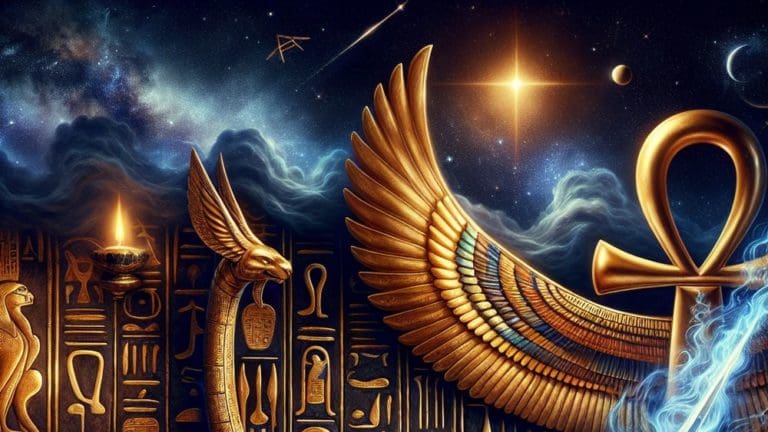Anuket: Egyptian Goddess Of The Nile – Mythology And Symbolism
Anuket: Egyptian Goddess Of The Nile – Mythology And Symbolism
Have you ever been fascinated by the rich tapestry of Egyptian mythology? Among the pantheon of gods and goddesses, the Egyptian god Anuket often remains shrouded in mystery, beckoning curious minds to delve deeper into her story. She embodies the life-giving nourishment of the Nile River, a vital artery that has sustained Egypt’s ancient civilizations.
Key Points:
- Anuket is the Egyptian goddess of the Nile, embodying its life-giving properties.
- She is associated with fertility, nourishment, and overseeing the Nile’s flooding.
- Anuket forms part of the Elephantine Triad, emphasizing her importance in Egyptian spirituality.
- Key symbols of Anuket include the feathered crown, ankh, scepter, and papyrus plant.
- Worship of Anuket was centered around Elephantine Island with dedicated temples and shrines.
- The Festival of Anuket celebrated the Nile’s inundation, marking a time of gratitude and abundance.
- Anuket’s role highlights the Egyptians’ deep reverence for nature and their gods.
Anuket’s allure isn’t just in her divine role but also in the symbols and rituals that marked her worship. Through manuscripts tinted by time and artifacts that whisper tales of millennia past, we embark on a journey to uncover the secrets she holds. It’s an adventure that invites more questions than answers, igniting a passionate desire to learn more about the mysteries of the Egyptian god Anuket.
The Mythological Background of Anuket
Delving into the mythological background of Anuket unveils a goddess whose origins are as fascinating as the waters she governs. Often depicted as a guardian of the Nile’s treasures, her story is interwoven with the fabric of ancient Egyptian culture and spirituality.
The Origins and Family of Anuket
Anuket, often hailed as the “Goddess of the Nile’s Bounty,” was revered as the deity of the river’s life-sustaining properties. Her genealogy places her among the most venerable deities in Egyptian mythology.
- Daughter of: Ra, the sun god, which highlights her esteemed standing among the Egyptian deities.
- Associated with: Khnum and Satis, forming a divine triad that underscores her importance in river-related worship.
Her name, meaning ’embrace,’ encapsulates the nurturing aspect of the Nile’s floods, which embrace the land and stimulate fertility. This connection portrays Anuket as not just a guardian of the river but as its personification, nurturing the lands of Egypt with a tender yet powerful grip.
Anuket, the Goddess of the Nile’s Bounty, symbolizes the nurturing and life-sustaining essence of the river, embodying a powerful yet gentle force that stimulates fertility in the lands of Egypt.
Anuket’s Role and Significance in Ancient Egyptian Religion
Anuket played a pivotal role in the religious landscape of ancient Egypt, embodying the essence of life through the Nile’s annual flooding.
- Guardian of the Nile: She was believed to oversee the annual flooding, which was crucial for agriculture.
- Symbol of fertility and nourishment: Reflecting the life-sustaining properties of the river.
Her worship was not confined to mere rituals but wove itself into the daily lives of the Egyptians, influencing their cultural and spiritual outlook on nature’s bounty. Anuket’s nurturing presence reminded them of the delicate balance between nature and civilization, urging a harmonious coexistence.
The Elephantine Triad: Anuket’s Association with Other Deities
Anuket’s association with other deities, particularly within the Elephantine Triad, highlights her integral role in Egyptian spirituality and cosmology.
- Member of the Elephantine Triad: Alongside Khnum and Satis, forming a powerful ensemble of water and fertility deities.
- Relationships Within the Triad: Often considered the daughter of Satis and Khnum, reinforcing her connection to the Nile’s life-giving aspects.
This divine triad dominated the religious scene at Elephantine, an island at the Nile’s first cataract. Their collective worship underscores the ancient Egyptians’ deep reverence for the Nile’s powers, viewing it as a divine source that required veneration and respect. Through rituals and offerings, they sought to ensure the continued favor of these potent deities, securing the fertility of their lands and the prosperity of their people.

Symbols and Worship of Anuket
Anuket, the Egyptian goddess of the Nile, was revered for her bountiful contributions to fertility and the river’s inundation. Her symbols and forms of worship illustrate the Egyptians’ deep connection with the river, embodying their gratitude and reverence for the life-sustaining waters she represented.
The Iconography and Symbols Associated with Anuket
The iconography of Anuket is rich and varied, portraying her significance in ancient Egyptian culture. Key symbols associated with her include the feathered crown and the ankh, signifying life and fecundity. She was also commonly depicted carrying a scepter and a papyrus plant, which stood as emblems of her domain over the River Nile and its fertility.
| Symbol | Meaning |
|---|---|
| Feathered crown | Royalty, divine authority, and the air element |
| Ankh | Life and the zest of living |
| Scepter | Power and jurisdiction, particularly over the Nile |
| Papyrus plant | Fertility, life, and abundance sourced from the Nile |
Anuket’s iconography showcases symbols like the feathered crown, ankh, scepter, and papyrus plant, each representing her authority, life, power, and connection to the fertility of the River Nile.
The Cult and Temples Dedicated to Anuket
The worship of Anuket was centered mainly around Elephantine Island, where her cult was believed to have originated. Temples and shrines dedicated to Anuket scattered along the Nile, serving as centers of worship and celebration of her bounty.
- The Temple of Anuket at Elephantine Island was the primary site for her worship.
- Shrines at Sehel Island celebrated her mythological role in the Nile’s annual flooding.
- Nubian temples, reflecting the goddess’s significance beyond Egyptian borders.
These sites hosted elaborate rituals and offerings, seeking Anuket’s favor for abundant harvests and protection of the river’s waters.

The Festival of Anuket and Its Importance
The Festival of Anuket, celebrated with great fervor, marked the season of inundation when the Nile’s waters flooded the lands, bringing fertility and abundance. This festival was a time of joy and gratitude, deeply intertwined with the Egyptian way of life.
- Offerings of precious stones and gold to the river symbolized thanks for its generosity.
- Feasts and music, celebrated communal unity and reverence for the goddess of the Nile.
This festival underscored the Egyptians’ deep connection with the Nile and reflected the integral role of Anuket in their cultural and spiritual life, celebrating the goddess’s blessing of fertility upon their lands.
FAQs
1. What are the main symbols associated with Anuket?
The main symbols associated with Anuket are often reflective of her as the goddess of the Nile’s fertility and nourishment. These include reeds and feathers, embodying her connection to water and life.
2. How was Anuket worshipped in ancient Egypt?
Anuket was worshipped in ancient Egypt through various rites that celebrated her as the nourisher of fields and bringer of fertility. The most significant form of worship was the Festival of the Nile, marking her contribution to the land’s fertility.
3. Can you explain the significance of the Elephantine Triad?
The significance of the Elephantine Triad, comprising Anuket, Khnum, and Satis, lies in their combined roles in controlling the Nile’s waters. They were believed to be vital deities for fertility and the well-being of Egypt.
4. What role did Anuket play in the ancient Egyptian understanding of the Nile?
Anuket played the role of personification of the Nile’s flooding, deemed crucial for Egypt’s fertility. Her association with the river’s life-giving properties underscored her importance in the ancient Egyptian culture.
Conclusion
Exploring the mythology and symbolism of the Egyptian god Anuket reveals a profound connection between ancient beliefs and the natural world. This journey through Egyptian mythology not only deepens our understanding of one of the most influential rivers in history but also the reverence the Egyptians had for their gods and goddesses. It’s imperative that we continue to explore and cherish these ancient narratives to appreciate the rich tapestry of human belief and the natural environment that sustains us.
So, let’s keep the river of curiosity flowing and dive even deeper into the mysteries of the past, sharing our findings and fostering a global appreciation for our collective heritage. Until next time, keep exploring and remember, history is not just a series of events; it’s a gateway to understanding our place in the universe. Farewell, my fellow history enthusiasts and may the wonders of the past continue to enlighten your journeys.
Cedric

